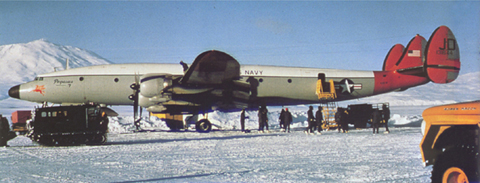Sorry for the radio silence from down south lately. It's been about a week since my last entry. This is not due to a holiday, it's really due to NOTHING happening here. Since last Monday midday, we have not flown once. The weather has been awful. Pretty much snow, blowing snow, ice crystals, snow pellets, freezing fog the works which all adds up to no flying around these parts.
It is also the week of Thanksgiving here, however since we typically have a six day work week and the holiday falls on a weekday--we observed it last night, Saturday night (as well as a rare two day weekend). The irony of yesterday is that the aviators have all sat around weathered out this week and the planned day off for the holiday was absolutely beautiful for flying. Typical Murphy's Law!
I opted to start off the holiday right with a run and did the 5K Turkey Trot Race here. The good news was it was sunny and
looked beautiful out. Beyond that it was c-c-c-c-c-c-c-c-old and windy!
 |
| Ready...set...gooble... |
 |
| Nearing the turnaround with Mount Discovery in the background |
 |
| Uphill with Ob Hill in the background |
 |
| The rest is downhill from here! |
I think it was around 14 F with around a 30 knot breeze straight uphill on ice. The good news was I finished, however I won't be using this time for any future race resume or qualification purposes! Around 200 folks ran and I did finish in the middle of the pack for the under 40 men's group. The winner ran around a 20:45 time. I think I would have trouble doing that on pavement downhill let alone here. Next year I get to change groups to the over 40. Look out!
The rest of the pre-gorging day was spent out on the sea ice. The recreation folks put together the first organized tours of the pressure ridges with a mountaineer. These monoliths are amazing. The forces of nature are amazing and beautiful. Its like getting to watch plate tectonics in high speed (i.e. over weeks versus 100 million years).
My immediate takeaway walking among the troughs and peaks of these frozen 25' waves was I know where the writers for Superman came up with the idea for his "Fortress of Solitude"!
 |
| From the comic... |
 |
| ...to reality! |
 |
| Fire and Ice! Pressure Ridges with Mount Erebus in the background |
The beauty here is amazing. Pictures are pretty, however hardly do justice to the reality walking through this ice field.
 |
| The ice is truly blue. Nothing touched up on these at all. |
 |
| A wall 20' of lifted blue ice |
 |
| A crevasse runs through this ridge |
These ridges are in constant motion. Tidal forces act upon them daily. As the cracks form, seawater floods into the voids, freeze and cause uplift. This in combination with the Ross Ice Shelf flowing into this transition zone causes a mangled mass of blue and white beauty.
 |
| Erebus frames by two ridges |
 |
| Flags mark the safe route. Wander off and you may slip into a hidden crevasse |
The other beauty of these ridges is that they attract marine wildlife. These crack do the work for the seals so they do not have to grind their way through the ice to find a breathing hole. Weddell Seals were the mammal of choice today as we walked through the lazily snorted and rolled over, caring less that we were interrupting their sun bathing.
 |
| Life among the ridges. |
 |
| Huh? Wha? Oh, back to sleep now. |
 |
| A skua joining in the fun, looking for a spare scrap of fish |
 |
| Zzzzzzzzz. |
 |
| A look back through the ice field at Mount Terror as we walk back to Mcmurdo. |
I couldn't have imagined a better Thanksgiving down here than what I did. Lots of fun. While I wish I was home to spend it with family and friends, this will suffice for now! Back to the work week. Hoping for some better weather! Some neat projects are about to start so I can't wait to check them out and share what I can.
Talk to everyone soon! Happy Thanksgiving!



















































